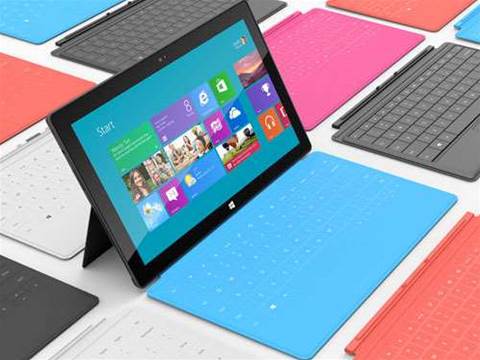In many ways Microsoft has done a horrible job in making people aware of the fact that it is actually launching three different versions of Windows in the coming weeks.
When talking to people around the office yesterday about Microsoft’s Surface tablet it became bleedingly obvious that there is still a lot of confusion about Windows 8, and more importantly a near complete unawareness of the differences between it and Windows RT.
We can see why this has happened. Windows 8 has, by and large, followed Microsoft’s traditional launch trajectory of preview releases and a release to manufacturing (and hence developers) months before its official launch. We’ve been living with, and talking about, Windows 8 for a long time now and while there is plenty more to come, especially when it comes to the new generation of hardware designed around the touch based features of Windows 8.
Windows RT, on the other hand, is designed to run on ARM processors, which means that it has stayed out of the public spotlight. You can’t just chuck Windows RT on an existing Windows PC like you can Windows 8. Instead Windows RT will come preinstalled on tablets, which means that even us journalists haven’t been able to spend any time with the operating system, and likely won’t until after the launch event on the 26th.
At least Microsoft’s third offering, Windows Phone 8, has a name that makes sense. Ask Microsoft what Windows RT means and you’ll get a few knowing smirks and a firm no comment. The situation has been exacerbated with Surface because the initial models, which run Tegra 3 processors, don’t have RT anywhere in the branding. Even when the Windows 8-based models of Surface launch in a few months they will be called Surface Pro, further obfuscating the differences.
Given that on the surface (pun intended), the two operating systems look identical, we can understand the confusion. But there is one major thing that separates Windows RT and Windows 8, and that is support for ‘legacy applications’.
Because Windows 8 is designed to run on x86 hardware – CPUs from Intel and AMD – it can support existing Windows software. Windows RT on the other hand is designed for ARM processors, which precludes it from running anything other than apps purchased from the Windows Store (which is accessed from a tile on the main screen).
This means that Surface won’t run your existing software - everything from Steam and its games, to productivity software like Photoshop or even previous versions of Microsoft Office (this is a large part of the reason why Microsoft is shipping Surface with an ARM version of Office 2013 preinstalled). If you want to run a program on Surface, you’ll have to hope that its developers have created a version for Windows RT, or you’ll be left floundering.
As we move forward more and more software will be developed for the Windows Store, and given Microsoft’s strong history of developer tools you can expect that a lot of programs found there will run on both Windows 8 and Windows RT. It still won’t be complete parity though – ARM based CPUs are relatively powerful but they don’t have the sheer processing grunt of x86 hardware, which will largely preclude them from being supported by programs that require serious computing power.
This isn’t to say that Windows RT is a bad idea – far from it in fact. At heart it is still built upon the same Windows NT kernel that Windows 8 and Windows Phone 8 are, which means that devices will integrate better into Windows computing environments than Android or iOS tablets will.
In many ways Surface is the most PC (and Xbox 360) friendly tablet ever made, and a product that we are incredibly keen to get our hands on. But its limitations really need to be made clearer than they currently are.






.jpg&h=142&w=230&c=1&s=1)
.png&h=142&w=230&c=1&s=1)




.jpg&w=100&c=1&s=0)
_(8).jpg&w=100&c=1&s=0)










